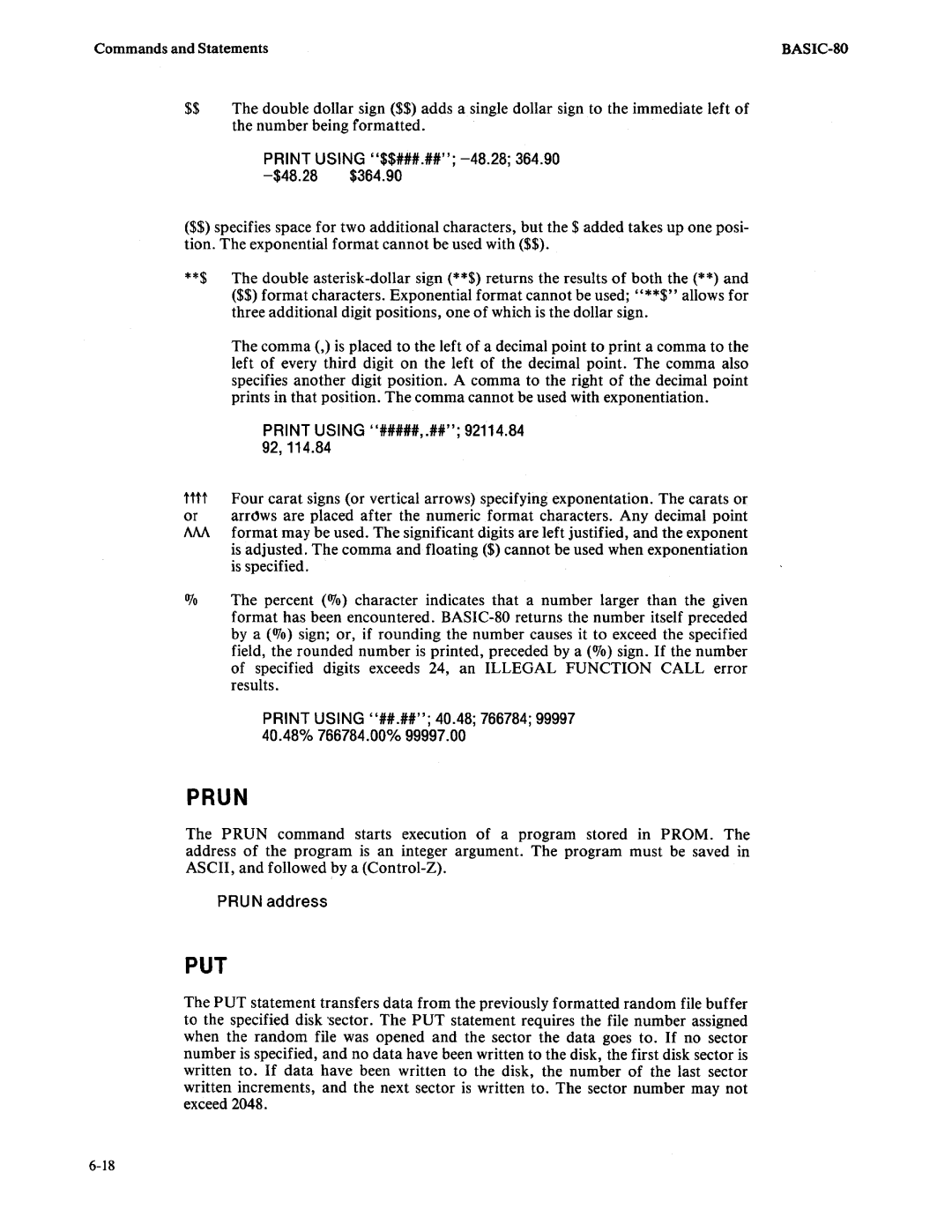
Commands and Statements |
$$ The double dollar sign ($$) adds a single dollar sign to the immediate left of the number being formatted.
PRINT USING "$$###.##";
($$) specifies space for two additional characters, but the $ added takes up one posi- tion. The exponential format cannot be used with ($$).
**$ The double
The comma (,) is placed to the left of a decimal point to print a comma to the left of every third digit on the left of the decimal point. The comma also specifies another digit position. A comma to the right of the decimal point prints in that position. The comma cannot be used with exponentiation.
PRINT USING "11###11,.##"; 92114.84 92,114.84
ttttFour carat signs (or vertical arrows) specifying exponentation. The carats or
or arrdws are placed after the numeric format characters. Any decimal point AM format may be used. The significant digits are left justified, and the exponent is adjusted. The comma and floating ($) cannot be used when exponentiation
is specified.
070The percent (070) character indicates that a number larger than the given format has been encountered.
PRINT USING "11#.1111"; 40.48; 766784; 99997 40.48% 766784.00% 99997.00
PRUN
The PRUN command starts execution of a program stored in PROM. The address of the program is an integer argument. The program must be saved in ASCII, and followed by a
PRUN address
PUT
The PUT statement transfers data from the previously formatted random file buffer to the specified disk 'sector. The PUT statement requires the file number assigned when the random file was opened and the sector the data goes to. If no sector number is specified, and no data have been written to the disk, the first disk sector is written to. If data have been written to the disk, the number of the last sector written increments, and the next sector is written to. The sector number may not exceed 2048.
